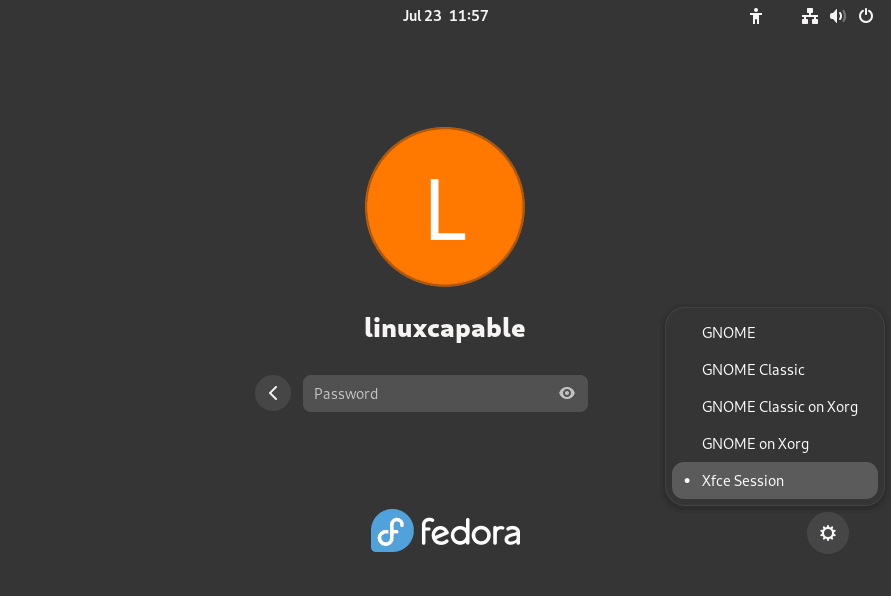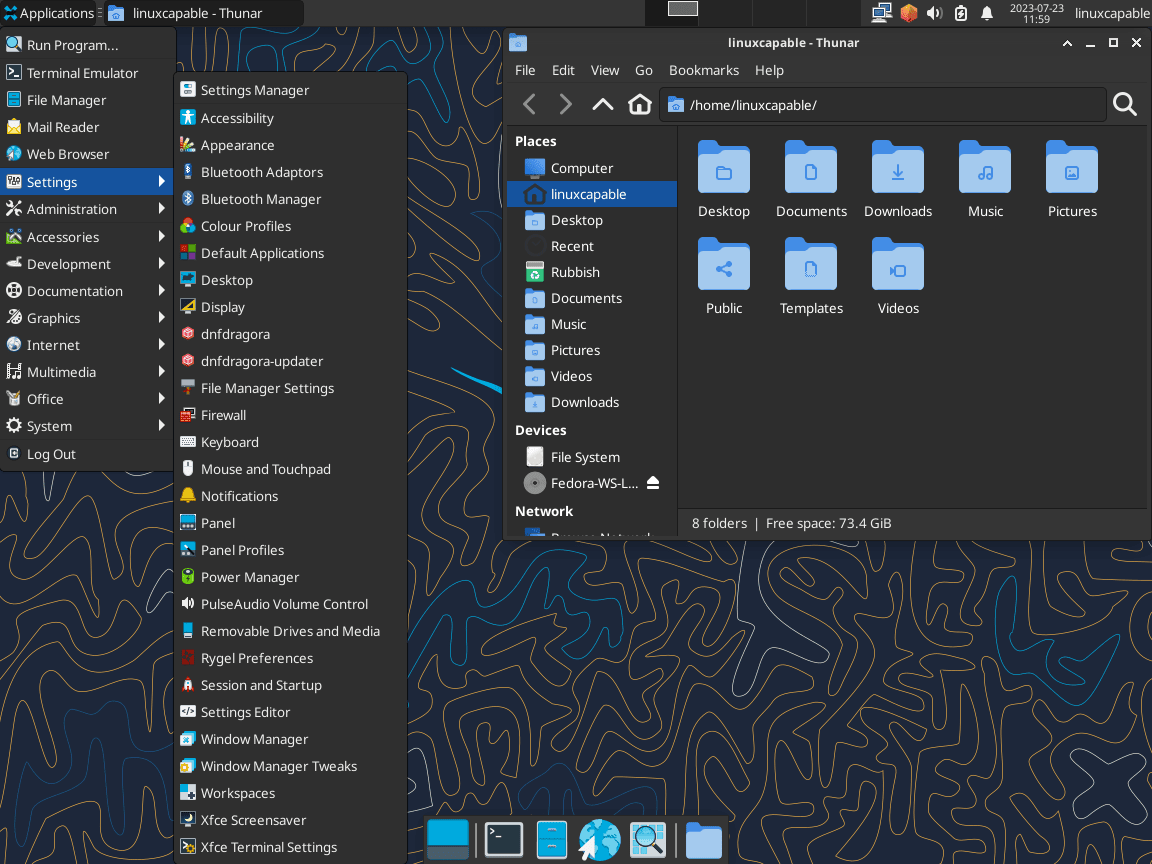Xfce offers a lightweight and customizable alternative for Fedora 40 or 39 Linux users seeking a change in their desktop environment and stands out in the Linux desktop environment landscape for several reasons:
- Efficiency: Known for its minimal resource usage, Xfce is ideal for older hardware and users who prefer a streamlined desktop experience.
- Customizability: Users have extensive control over Xfce’s appearance and functionality, allowing for a tailored computing experience.
- Traditional Usability: Xfce adheres to a classic desktop design, which might resonate with users who prefer a more familiar layout than the modern design of environments like GNOME.
While GNOME offers a contemporary and touch-friendly design, Xfce leans towards a more traditional approach. This distinction can be particularly appealing for those who want a straightforward and efficient interface without the bells and whistles. Now, let’s start installing the alternative desktop environment on your system.
Refresh Fedora Packages Before Xfce Installation
The initial step is to update and upgrade all existing system packages. This action is fundamental in keeping the installed packages in their latest versions, enhancing compatibility, and minimizing conflicts with new installations. To accomplish this, we will use the dnf upgrade command accompanied by the --refresh option, which synchronizes your local package index with the latest updates from the server.
sudo dnf upgrade --refreshInstall Xfce Desktop via DNF Command
Fedora, by default, maintains a working and up-to-date version of Xfce in its repositories. As Fedora is an upstream release, this version is typically synchronized with recent Xfce releases and enhancements, making its installation and maintenance straightforward compared to enterprise Linux distributions.
To install Xfce, the command dnf group install "Xfce" is used:
sudo dnf group install "Xfce"Initiating System Reboot For Xfce Installation Completion
After successfully installing the Xfce Desktop Environment, the final step is to reboot the system. This crucial action allows the system to initialize the newly installed desktop environment, ensuring it’s ready to use upon the next system startup. To reboot the system, use the reboot command:
sudo rebootLaunching Xfce Desktop Environment
Following the successful installation of Xfce, the subsequent critical step involves accessing your new Xfce environment. Upon restarting your system after installation, you’ll find yourself at the user login screen, where you can select your desired desktop environment.
Accessing Desktop Environment Options
When you reach the login screen, look for an icon resembling a gear or settings cogwheel. Clicking or interacting with this icon reveals a list of all the desktop environments currently installed on your system.

Selecting Xfce Environment
After clicking on the settings cogwheel, a dropdown menu will appear. Select “Xfce Session.” This will initiate your new session within the Xfce environment, introducing you to its streamlined, efficient, and highly customizable workspace.

Managing Xfce Desktop
Update Xfce Desktop
Maintaining an updated Xfce desktop environment on your Fedora system is essential for securing and enhancing your system. Updates provide not only the latest features but also crucial security patches. Through the Command Line Interface (CLI), the terminal is your tool for executing these updates efficiently.
To update your system, including Xfce, you’ll utilize the DNF package manager. Input the following command in the terminal:
sudo dnf upgrade --refreshThis command prompts the DNF package manager to refresh your system’s software repository database and update all installed packages, ensuring your Xfce environment is current.
Remove Xfce Desktop
If you switch desktop environments or need to remove Xfce, the DNF package manager simplifies this process.
Execute the following command to uninstall Xfce and its associated packages:
sudo dnf group remove "XFCE"After the uninstallation process concludes, reboot your system with this command:
sudo rebootSelecting Your Default Desktop Environment
If you’ve removed Xfce, you’ll land on the login screen following the system reboot. Here, you have the option to select a new default desktop environment. Choose one that aligns with your usage preferences and requirements.
Final Thoughts on Xfce Desktop Installation
Installing and managing the Xfce Desktop on Fedora Linux provides a clear pathway to customizing your Linux experience. Throughout this guide, we’ve walked you through the steps to install Xfce, initiate it, and manage its updates and uninstallation. With its lightweight and customizable nature, Xfce can be a perfect choice for users seeking efficiency and simplicity in their desktop environment.



Hi.
nothing close to XFCE on version 40 under virtualbox (testing). The closest thing is xfdesktop, which seems to install nd create a group xfce, which I add myself too. Still, no xfce desktop in the boot menu.
Cheers.
Hi Jean-marc,
You could try the following commands to install XFCE:
sudo dnf install @xfce-desktop-environment.Alternatively, you can also try:
sudo dnf group install "Xfce Desktop"I’ll look into installing XFCE alongside GNOME and update the article soon if there are any significant changes in Fedora 40.
Thanks for your feedback!